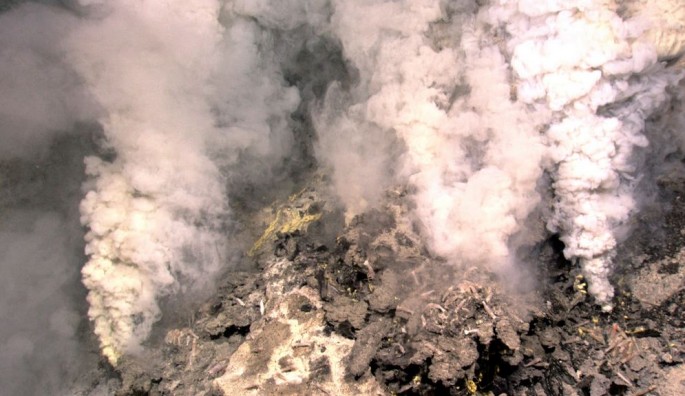Chemicals spewed by alkaline hydrothermal vents on the ocean floor caused carbon molecules to recombine into molecules usually associated with living organisms, giving rise to life on Earth, said a new study.
These numerous hydrothermal vents produce simple carbon-based molecules such as methanol, acetic acid and pyruvic acid out of the dissolved carbon dioxide in the water.
The study also pointed out that mineral particles inside hydrothermal vents have similar chemical properties to enzymes, the biological molecules that govern chemical reactions in living organisms.
Hydrothermal vents in the deep ocean typically form along the mid-ocean ridges such as the East Pacific Rise and the Mid-Atlantic Ridge where two tectonic plates are diverging and new crust is being formed. They are fissures on the Earth's surface from which geothermally heated water issues.
"There is a lot of speculation that hydrothermal vents could be the location where life on Earth began," said study lead author Dr. Nora de Leeuw of the University College London, UK.
"There is a lot of carbon dioxide dissolved in the water, which could provide the carbon that the chemistry of living organisms is based on, and there is plenty of energy, because the water is hot and turbulent. What our research proves is that these vents also have the chemical properties that encourage these molecules to recombine into molecules usually associated with living organisms."
Dr. de Leeuw and her colleagues investigated the conditions under which the mineral particles would catalyze the conversion of carbon dioxide into organic molecules using lab experiments combined with computer simulations.
The experiments mimicked the conditions present in hydrothermal vents where hot and slightly alkaline water rich in dissolved CO2 passes over the mineral greigite (Fe3S4) on the inside surfaces of the vents. These experiments hinted at the chemical processes between these two substances.
Researchers said the simulations provided a molecule-by-molecule view of how the carbon dioxide and greigite interacted, helping make sense of what was being observed in the experiments.
"We found that the surfaces and crystal structures inside these vents act as catalysts, encouraging chemical changes in the material that settles on them," said co-author Dr. Nathan Hollingsworth, also of the University College London.
"They behave much like enzymes do in living organisms, breaking down the bonds between carbon and oxygen atoms. This lets them combine with water to produce formic acid, acetic acid, methanol and pyruvic acid. Once you have simple carbon-based chemicals such as these, it opens the door to more complex carbon-based chemistry."



























